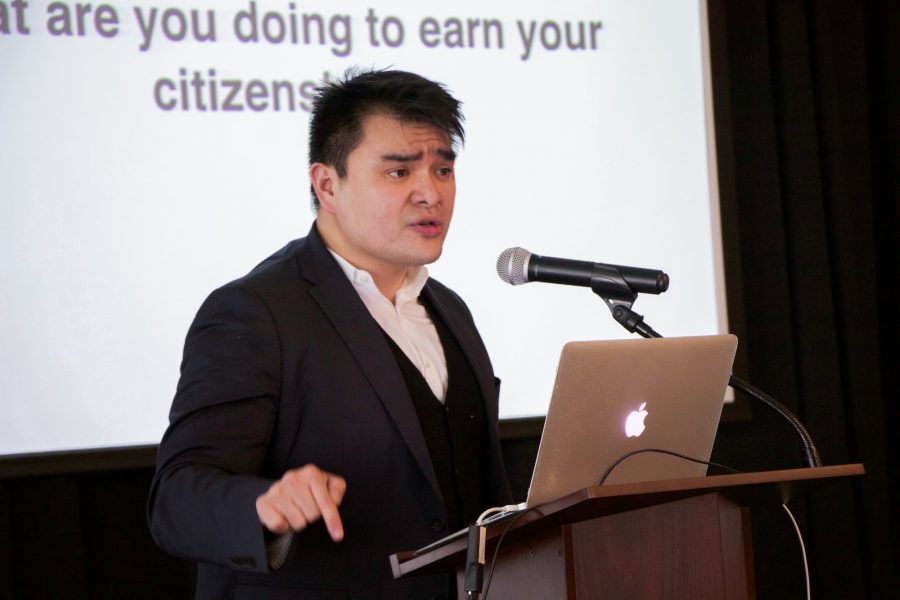Undocumented immigrants are from everywhere
Jordan Sweidan/The Skyline View
Journalist Jose Antonio Vargas speaks to Skyline students and staff about undocumented immigrants in America in building 6 on April 7, 2016.
Immigration is not a simple topic, nor is it easy discuss without it getting controversial. But what makes an American citizen?
The lecture on April 7 largely focused on undocumented immigrants, with the underlying issues of people not wanting to discuss what illegal immigrants are willing to do to stay in America.
Guest speaker Jose Antonio Vargas is a Pulitzer Prize winning journalist and filmmaker bent on changing the “American identity”. He is the surviving co-founder of Define American, a non-profit media culture organization seeking to elevate the conversation around immigration and citizenship in America, and also the Executive Editor of #EmergingUS.
Vargas, in his presentation, used humor and sarcasm to get the crowd going. He spent the time speaking about how students should begin talking about the politics of immigration and racism.
“It is about getting people to own their culture and own the fact that they own whatever they are,” Davanti Cade, a Skyline College business major, said. “These are questions I ask about my own family.”
Even though Vargas grew up in Mountain View, California from the age of 12, he himself is an undocumented immigrant. He did not know he was in the US illegally until much later.
As a journalist, he wrote himself a 4,000 word essay in the New York Times about being an illegal immigrant in the United States, and what he had to do to stay here. This was due to realizing that he might be in a lot of legal trouble since he lied on his job applications about being an American citizen.
But nothing happened. This prompted him to write a part two article on how the government did not deport him.
“It’s kind of like a metaphor for how people think of [illegal immigrants] right?” Vargas said. “As long as someone is mowing your lawn or babysitting your kids and serving your drinks. So as long as someone is working in Salinas, in Central Valley to make sure the tomatoes and the strawberries are harvested, as long as you have lettuce in your hamburger at In-N-Out, you’re cool.”
Vargas went on to say it is more than a Hispanic and border situation. People do not want to acknowledge that undocumented people are being exploited for cheap labor.
The question is then asked: “Why don’t we talk about undocumented black and white people?”
The discussion of stereotypes surrounding “illegal aliens” and what they usually look like followed.
To prove his point, he and 32 other people, from 15 different countries, revealed the hidden faces of undocumented immigrants on the cover of Time Magazine. He showed what it actually looks like to be an undocumented immigrant versus what the mainstream media portrays: Latinos crossing the border.
The crowd laughed at his impersonations of the people he talked to, including presenting a few clips of his work to further give the audience a piece of his experience as a journalist and film maker exploring these topics.
“That we need to start having a conversation about obviously documented students and education,” Skyline student Jazmena Bannag said, referring to what she learned. “The whole barrier in diversity; people are not having the conversation.”
The retelling of his personal experience, in all, was to show America in a different light when it comes to the deeper issue of immigration.
From what was said in the speech, as long as America gets its cheap labor and still makes profit off of illegal immigrants, there will be no complaints.
“This is America,” Vargas said. “Built on the back of cheap labor.”







